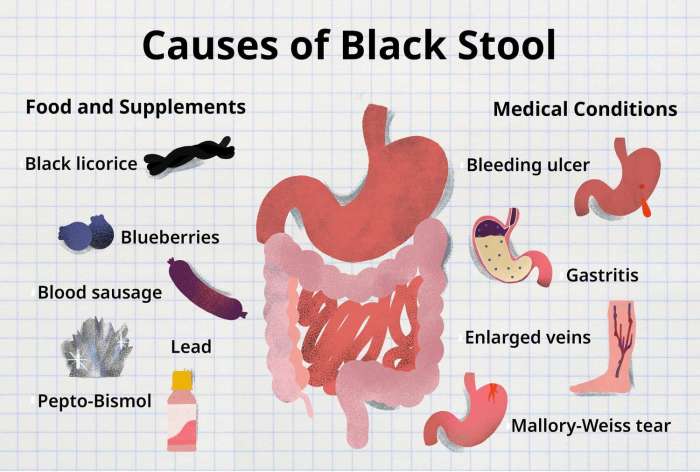Apple cider vinegar benefits have been touted for centuries, promising everything from digestive health improvements to weight management. This comprehensive exploration delves into the origins, production methods, and potential health effects of apple cider vinegar, examining the nuances between different types and highlighting the current scientific understanding. We’ll also discuss potential risks, safe usage, and compare it to other remedies.
Understanding the diverse types of apple cider vinegar (raw, filtered, organic) and their nutritional profiles is crucial to evaluating potential benefits. We’ll present a table comparing these types, showcasing variations in vitamin and mineral content. This detailed look at apple cider vinegar will equip you with the knowledge to make informed decisions about its potential role in your health journey.
Introduction to Apple Cider Vinegar
Apple cider vinegar (ACV) is a versatile condiment and popular health supplement derived from apples. Its tangy flavor adds a unique touch to various dishes, and its potential health benefits have sparked considerable interest. Originating from the fermentation process of apples, ACV has been used for centuries in both culinary and traditional medicine practices.The production of apple cider vinegar involves several key steps.
First, apples are crushed or ground to release their sugars. These sugars are then fermented by yeast, which converts the sugars into alcohol. Subsequently, a second fermentation process occurs, involving bacteria that convert the alcohol into acetic acid, the primary component responsible for ACV’s distinctive tang and purported health properties. The resulting liquid is then filtered, bottled, and ready for consumption.
Types of Apple Cider Vinegar
Different processing methods and ingredients result in various types of apple cider vinegar. Raw apple cider vinegar is produced without filtering or pasteurization, retaining the natural components of the fermented apple juice, including beneficial bacteria and enzymes. Filtered ACV, on the other hand, undergoes a filtering process to remove these components, resulting in a clearer, more uniform product. Organic ACV is cultivated using farming methods that adhere to specific standards regarding pesticide use and overall agricultural practices.
Nutritional Profile Comparison
The nutritional content of different apple cider vinegar types can vary. The table below provides a comparative overview of potential vitamin, mineral, and other nutrient content. It’s important to note that the exact values can fluctuate based on the specific production process and the quality of the apples used.
| Type | Vitamin Content | Mineral Content | Other Nutrients |
|---|---|---|---|
| Raw | May contain trace amounts of B vitamins (e.g., thiamine, riboflavin), Vitamin C, and other vitamins depending on the initial apple content. | May contain potassium, magnesium, calcium, and other minerals present in the apple. | Potentially includes beneficial enzymes and bacteria, although their levels can vary significantly. |
| Filtered | Lower amounts of vitamins and minerals compared to raw vinegar due to the removal of the sediment and bacteria during processing. | Contains minerals but in lower amounts than raw vinegar. | Lacks the enzymes and beneficial bacteria present in raw vinegar. |
| Organic | Potentially higher in certain vitamins and minerals due to the absence of synthetic pesticides and fertilizers during apple cultivation. | Contains minerals present in the organic apples. | May contain slightly different levels of certain beneficial compounds, as the cultivation practices impact the nutrient content of the apples. |
Potential Health Benefits
Apple cider vinegar, a tangy liquid derived from apples, has garnered considerable attention for its potential health benefits. While more research is needed to definitively prove these claims, anecdotal evidence and some preliminary studies suggest it may offer various advantages. This exploration delves into the potential health benefits, examining the mechanisms behind them, and highlighting the importance of further investigation.This discussion will explore the potential health benefits of apple cider vinegar, focusing on digestive health, weight management, and blood sugar control.
Apple cider vinegar has a surprising number of health benefits, like aiding digestion and potentially helping with weight management. However, it’s crucial to be mindful of your protein intake. Overdoing it on protein can lead to a range of issues, including potential kidney strain and digestive discomfort. Knowing the potential side effects of too much protein is important for maintaining overall health, and finding the right balance is key.
Fortunately, apple cider vinegar can also help support a healthy gut microbiome, which is vital for protein digestion and overall well-being. too much protein side effects It’s a great addition to a balanced diet for those looking to maximize their health.
We’ll examine the potential mechanisms by which it may impact these areas, but it’s crucial to remember that these are potential benefits, not definitively proven facts. The evidence supporting these benefits is still developing.
Digestive Health, Apple cider vinegar benefits
Apple cider vinegar’s potential to support digestive health stems from its acidity and its potential to improve gut bacteria balance. Some believe that its acidity may aid in digestion by breaking down food. Further, its purported ability to balance gut bacteria might lead to improved digestive comfort.
Weight Management
Potential weight management benefits of apple cider vinegar are linked to its potential to suppress appetite and enhance fat burning. Some studies suggest that it may reduce food intake and increase metabolism, contributing to a potential role in weight management strategies. However, more robust, long-term studies are needed to confirm these effects.
Blood Sugar Control
Apple cider vinegar’s potential impact on blood sugar control is a significant area of interest. Some research suggests that it may help regulate blood sugar levels, potentially by slowing the absorption of glucose into the bloodstream. Further studies are needed to understand its role in managing blood sugar fluctuations and its efficacy in various populations.
Potential Benefits Summary
| Benefit | Mechanism | Evidence |
|---|---|---|
| Digestive Health | Potential to improve digestion by breaking down food and potentially balancing gut bacteria. | Limited research; more studies are needed to confirm these effects. |
| Weight Management | May suppress appetite, enhance fat burning, and potentially increase metabolism. | Some studies suggest a potential effect, but more robust research is required. |
| Blood Sugar Control | May slow the absorption of glucose into the bloodstream, potentially regulating blood sugar levels. | Some research suggests a potential effect, but more robust research is required. |
Potential Risks and Side Effects: Apple Cider Vinegar Benefits
While apple cider vinegar offers potential health benefits, it’s crucial to be aware of the potential risks and side effects. Uncontrolled consumption can lead to adverse reactions, especially when not used judiciously or in conjunction with other medications or health conditions. Understanding these risks allows for informed decision-making and responsible use.
Potential Digestive Issues
Apple cider vinegar can irritate the esophagus and stomach lining, particularly for individuals with pre-existing digestive sensitivities or conditions like acid reflux. This can manifest as heartburn, nausea, or abdominal discomfort. In some cases, individuals might experience a burning sensation in the throat or mouth after consuming apple cider vinegar. This is often a result of the acidic nature of the vinegar.
The intensity of these symptoms can vary significantly based on individual factors and the concentration of the vinegar.
Dental Concerns
The acidic nature of apple cider vinegar can erode tooth enamel over time, potentially leading to dental sensitivity or cavities. It’s essential to consume apple cider vinegar with caution and to follow proper oral hygiene practices. Rinsing the mouth with water after consumption, and using fluoride toothpaste, can help mitigate this risk.
Potential Interactions with Medications
Apple cider vinegar can interact with certain medications, potentially altering their absorption or effectiveness. This is particularly true for medications that are sensitive to changes in pH levels. For example, individuals taking medications that require acidic environments for optimal absorption might find that apple cider vinegar negatively affects their efficacy. It’s crucial to consult with a healthcare professional before incorporating apple cider vinegar into your routine if you’re currently taking any medications.
Importance of Moderation and Professional Guidance
To minimize potential risks, it’s crucial to consume apple cider vinegar in moderation. Starting with smaller amounts and gradually increasing the dosage as tolerated is recommended. This allows the body to adjust to the new substance. Always consult a healthcare professional before introducing apple cider vinegar into your diet, especially if you have underlying health conditions or are taking any medications.
Their professional guidance can help you understand the specific risks and benefits tailored to your individual needs.
Potential Side Effects Categorization
- Mild Side Effects: These typically include mild digestive discomfort such as heartburn, nausea, or a burning sensation in the mouth. These are usually temporary and resolve with reduced intake or cessation of use. They are often less severe than moderate or severe side effects.
- Moderate Side Effects: Moderate side effects may include more persistent digestive issues like stomach pain or discomfort, along with potential dental sensitivity. These effects may necessitate adjustments to dosage or cessation of use depending on individual tolerance.
- Severe Side Effects: Severe side effects are less common but can occur. These include severe allergic reactions, such as hives or difficulty breathing, and potentially dangerous interactions with certain medications. If you experience severe side effects, immediately seek medical attention.
Scientific Evidence and Research
The promise of apple cider vinegar (ACV) for health improvement has sparked considerable interest, but what does the scientific community say? A review of existing research reveals a mixed bag of results, with some studies suggesting potential benefits, while others offer little to no conclusive support. Understanding the limitations of current research and the areas needing further investigation is crucial to a balanced perspective.Current research on ACV’s effects is often limited by factors such as study design, sample size, and the specific ways ACV is used (e.g., concentration, duration of use).
These variables make direct comparisons between studies challenging and often hinder the drawing of definitive conclusions. Moreover, many studies investigate specific aspects of ACV’s potential effects, such as its impact on blood sugar levels or weight management, rather than a holistic view of its impact on overall health.
Overview of Existing Studies
A variety of studies have explored the potential benefits of apple cider vinegar. Some have shown promising results, while others have produced inconclusive or negative findings. This variability underscores the complexity of ACV’s interaction with the human body.
- Blood Sugar Regulation: Some studies suggest that ACV may help regulate blood sugar levels, particularly in individuals with type 2 diabetes. However, the magnitude of these effects is often modest and the mechanisms involved are not fully understood. For instance, one study observed a slight reduction in blood glucose levels after consuming ACV, but the effect was not consistent across all participants.
Other studies failed to demonstrate a significant impact on blood sugar.
- Weight Management: Research on ACV’s role in weight management is similarly inconsistent. Some studies have reported a modest reduction in body weight or body fat in participants consuming ACV, but these results aren’t always replicated. The observed effects may be attributed to appetite suppression or changes in metabolism. Additional research is needed to determine the long-term effects of ACV consumption on weight management strategies.
- Digestive Health: Some studies have examined the impact of ACV on digestive health, focusing on its potential role in reducing bloating and improving gut health. Results are still mixed and more robust research is required to understand the relationship between ACV consumption and gut microbiome changes. Some studies have noted improved digestion in some participants, while others found no significant effects.
Limitations of Current Research
Current studies on apple cider vinegar have limitations that affect the interpretation of their findings. These limitations should be considered when evaluating the evidence.
- Study Design and Methodology: Many studies have employed small sample sizes, leading to limited statistical power to detect significant effects. Variations in study designs, including the duration of ACV intake and the specific formulation used, also complicate direct comparisons across studies. Inconsistencies in methodologies make it difficult to draw conclusive results.
- Lack of Long-Term Studies: The majority of studies on ACV have been short-term, often lasting only a few weeks. More research is needed to determine the long-term effects of regular ACV consumption on various health conditions.
- Mechanism of Action: While some studies have explored the potential mechanisms by which ACV might exert its effects, a complete understanding of its interaction with the body is still lacking. Further research is required to investigate the underlying biological pathways.
Areas for Future Research
Further research is needed to address the limitations of existing studies and better understand ACV’s potential health benefits.
Apple cider vinegar has been touted for various health benefits, often lauded for aiding digestion. However, if you’re experiencing symptoms like bloating, gas, or diarrhea, it’s important to consider potential issues like small intestinal bacterial overgrowth (SIBO). Understanding the signs of small intestinal bacterial overgrowth sibo is crucial for determining the best course of action. Even if SIBO isn’t the culprit, apple cider vinegar’s purported digestive benefits might still be worth exploring, potentially offering relief and improved gut health.
- Larger, Well-Designed Trials: Future studies should employ larger sample sizes and more rigorous methodologies to increase the statistical power of findings and reduce the potential for confounding variables. Longitudinal studies are necessary to examine the long-term effects of ACV consumption.
- Investigating Specific Populations: Future research should explore the effects of ACV on specific populations, such as individuals with certain health conditions (e.g., diabetes, heart disease, or digestive disorders). This will help determine if ACV is safe and effective for particular groups.
- Determining Mechanisms of Action: Further research should focus on investigating the underlying mechanisms by which ACV may influence various biological processes. This includes understanding its interaction with gut microbiota, blood sugar regulation, and metabolic processes.
Practical Application and Usage
Apple cider vinegar (ACV) has found its way into various aspects of daily life, from culinary creations to potential health remedies. Its tangy flavor and purported benefits have made it a popular ingredient for those seeking a natural approach to wellness. Understanding how to incorporate ACV safely and effectively is key to maximizing its potential.Incorporating ACV into a healthy diet requires mindful consideration.
Apple cider vinegar has been touted for its various health benefits, from aiding digestion to potentially boosting immunity. But if you’re reaching for pain relief, knowing how long Tylenol’s acetaminophen lasts is also crucial. Understanding the duration of its effects can help you manage pain effectively, and how long does tylenol acetaminophen last will give you a clearer picture.
Ultimately, incorporating natural remedies like apple cider vinegar into a balanced approach to health is often beneficial.
While touted for its potential health advantages, its effects can vary from person to person. It’s crucial to use ACV in moderation and to be aware of potential side effects. This section details practical applications, including proper dosage and safety considerations.
Ways to Use Apple Cider Vinegar
ACV can be used in various ways, offering a range of culinary and potential health applications. Its versatility extends beyond salad dressings, providing a variety of options for daily use.
- Culinary Uses: ACV adds a tangy kick to various dishes. It can be used as a salad dressing, marinade for meats, or an ingredient in sauces and dips. Its versatility allows for creative culinary applications.
- Drinks: ACV can be diluted in water or other beverages to create a refreshing drink. The addition of honey or other natural sweeteners can enhance flavor and provide additional nutrients. The combination of ACV and water, often referred to as “ACV water,” is a common method of consumption.
- Topical Application: ACV has been traditionally used topically for various skin concerns. Diluted ACV can be applied to the skin as a toner or for hair care. The diluted solution should be applied with caution, as undiluted ACV can cause irritation. Always conduct a patch test before applying it to a larger area.
Incorporating ACV into a Healthy Diet
Careful consideration is necessary when incorporating ACV into a balanced diet. It’s essential to understand the appropriate dosage and potential side effects.
- Start Slowly: Begin by using small amounts of ACV and gradually increase the dosage as tolerated. This approach allows for a more personalized and safe integration into your diet.
- Dilution is Key: Never consume ACV undiluted. Dilute it with water, juice, or other beverages to reduce the acidity and potential for stomach upset. The recommended dilution ratio varies depending on the desired effect and individual tolerance.
- Monitor Your Response: Pay attention to how your body reacts to ACV. If you experience any discomfort, such as stomach upset or skin irritation, reduce the dosage or discontinue use.
ACV Recipes
ACV’s versatility allows for a wide array of culinary applications. Here are some recipe examples:
| Recipe | Ingredients | Instructions |
|---|---|---|
| ACV-Based Salad Dressing | 2 tablespoons ACV, 1 tablespoon olive oil, 1 teaspoon honey, salt and pepper to taste | Whisk all ingredients together in a small bowl. Drizzle over your favorite salad. |
| ACV Marinade for Chicken | 1/4 cup ACV, 2 tablespoons soy sauce, 1 tablespoon olive oil, 1 teaspoon garlic powder, 1/2 teaspoon onion powder | Combine all ingredients in a bowl and add chicken pieces. Marinate for at least 30 minutes, or overnight for best results. |
| ACV-Infused Water | 1 tablespoon ACV, 8 ounces water, optional fruit slices (cucumber, lemon, or berries) | Add ACV and fruit slices (if using) to a pitcher of water. Stir gently and allow to chill. |
Dosage Recommendations
Dosage for ACV usage varies depending on the intended purpose. It’s crucial to start with a small amount and gradually increase as tolerated.
- Salad Dressing: 1-2 tablespoons per serving.
- Drinks: 1-2 teaspoons diluted in 8 ounces of water.
- Topical Application: Dilute with water in a 1:10 ratio. Always patch test before applying to a large area.
Safety Precautions and Considerations

Apple cider vinegar, while offering potential health benefits, must be used cautiously. Understanding safe practices is crucial to maximize its potential advantages while minimizing any risks. This section delves into essential safety precautions, emphasizing the importance of proper dilution, storage, and awareness of potential side effects.
Diluting Apple Cider Vinegar
Proper dilution is paramount when consuming apple cider vinegar. Undiluted apple cider vinegar can cause significant irritation to the esophagus and stomach lining. Its high acidity can erode tooth enamel over time if consumed frequently in undiluted form. Diluting the vinegar with water, juice, or other beverages greatly reduces the risk of these issues. A general guideline is to dilute with water in a 1:4 ratio (one part vinegar to four parts water).
Experiment to find the dilution level that best suits your personal tolerance.
Storage Practices for Maintaining Quality
Proper storage is essential to maintaining the quality and safety of apple cider vinegar. Store apple cider vinegar in a cool, dark, and dry place, ideally in a glass container. Glass containers are preferable to plastic ones, as they do not leach chemicals into the vinegar over time. Exposure to light and heat can degrade the vinegar’s properties and reduce its effectiveness.
It is also advisable to keep the vinegar sealed tightly to prevent contamination and maintain its flavour.
Risks of Consuming Undiluted Apple Cider Vinegar
Consuming undiluted apple cider vinegar can lead to several potential adverse effects. Direct contact with the sensitive tissues of the mouth, throat, and esophagus can cause burning, pain, and irritation. Repeated or prolonged exposure can result in damage to tooth enamel, increasing the risk of cavities. The high acidity can also lead to acid reflux or exacerbate existing gastrointestinal issues in some individuals.
A Guide to Safe Apple Cider Vinegar Use
This guide Artikels precautions and warnings to ensure safe consumption of apple cider vinegar.
- Always dilute apple cider vinegar before consuming it. Use a 1:4 ratio (one part vinegar to four parts water) as a starting point. Adjust to your tolerance.
- Never consume undiluted apple cider vinegar directly. The high acidity can damage the delicate tissues of the mouth and throat.
- Store apple cider vinegar in a cool, dark, and dry place. Use glass containers to avoid chemical leaching. Keep the container tightly sealed to prevent contamination.
- Consult your doctor before using apple cider vinegar, especially if you have underlying health conditions or are taking medications. Pre-existing conditions, such as ulcers, can be exacerbated by its acidity.
- Monitor your body’s response to apple cider vinegar. If you experience any discomfort or adverse reactions, discontinue use immediately and consult a healthcare professional.
- Be mindful of the vinegar’s effect on tooth enamel. Frequent undiluted consumption may lead to erosion. Use caution and monitor any sensitivity or pain.
Comparison with Other Remedies
Apple cider vinegar, while gaining popularity, isn’t a standalone solution for all health concerns. Understanding its effectiveness alongside other remedies is crucial for informed decision-making. This section explores how apple cider vinegar stacks up against common alternatives, highlighting potential advantages, disadvantages, and crucial interactions.
Comparing Apple Cider Vinegar with Other Remedies for Digestive Issues
Many individuals turn to apple cider vinegar for digestive relief. However, other remedies, like probiotics, fiber-rich foods, or specific dietary changes, can be equally or even more effective. Probiotics, for example, directly replenish beneficial gut bacteria, potentially addressing the root cause of digestive discomfort. Similarly, a diet rich in fiber can promote regular bowel movements and improve overall digestive health.
| Remedy | Pros | Cons | Comparison |
|---|---|---|---|
| Apple Cider Vinegar | May help with mild indigestion, potentially by increasing stomach acid production. Potentially aids in reducing bloating. | May not be suitable for individuals with acid reflux or ulcers. Potential for interaction with certain medications. Effectiveness may vary greatly between individuals. | Can be a supplementary approach to digestive issues, but not always a primary solution. More research is needed to establish a definitive comparison with probiotics or dietary changes. |
| Probiotics | Directly support beneficial gut bacteria, potentially improving digestion and reducing bloating. Numerous studies support their efficacy in various digestive issues. | Effectiveness can vary depending on the type and dosage of probiotics. Potential for side effects like gas or bloating in some individuals. | Generally considered a more direct and potentially more effective approach for addressing the root cause of digestive issues compared to apple cider vinegar. Probiotics can be a more targeted and beneficial solution. |
Potential Synergistic and Antagonistic Effects
Combining apple cider vinegar with other remedies can either enhance or hinder their effectiveness. For instance, consuming apple cider vinegar with a high-fiber meal might improve digestion by aiding in the breakdown of fiber. However, combining it with certain medications, such as blood thinners or insulin, could potentially lead to adverse interactions.
Cautionary Note on Self-Medication
Always consult a healthcare professional before combining apple cider vinegar with other remedies or medications. Individual responses to treatments can vary greatly, and professional guidance is essential to ensure safety and efficacy. Self-treating can be risky, especially when combining remedies without understanding potential interactions. Professional medical advice is critical.
Conclusion

Apple cider vinegar, a popular kitchen staple, has garnered significant interest for its potential health benefits. This exploration has delved into its purported advantages, risks, and scientific backing. While anecdotal evidence and some preliminary studies hint at positive effects, a crucial understanding of its limitations is paramount.This discussion highlights the importance of distinguishing between potential benefits and definitive proof.
Many claims surrounding apple cider vinegar remain unproven, or at best, supported by limited and often inconclusive research.
Summary of Key Points
This review has presented a comprehensive overview of apple cider vinegar, touching upon its various purported benefits, potential risks, and scientific backing. The key points can be summarized as follows:
- Apple cider vinegar, derived from fermented apples, contains various organic acids and compounds that have been linked to a range of potential health effects.
- Potential health benefits often cited include improved digestion, weight management, and blood sugar control. However, the evidence supporting these claims is often limited, observational, or based on small-scale studies.
- Potential risks and side effects, including tooth enamel erosion, stomach upset, and interactions with medications, must be considered. These risks are often dose-dependent and individual reactions can vary greatly.
- Scientific evidence for many purported benefits remains inconclusive. More robust, well-designed clinical trials are needed to definitively assess the efficacy of apple cider vinegar for specific health conditions.
- Practical applications of apple cider vinegar vary widely, ranging from culinary uses to potential medicinal applications. The lack of strong scientific backing cautions against relying on apple cider vinegar as a primary treatment for any ailment.
Importance of Further Research and Professional Consultation
Given the current state of knowledge, it’s critical to approach claims about apple cider vinegar with a degree of skepticism. While promising, the scientific evidence supporting its health benefits is often limited or inconclusive.
- Further research, particularly large-scale, randomized controlled trials, is essential to establish a stronger scientific basis for the purported health benefits of apple cider vinegar.
- Consultation with a qualified healthcare professional is crucial before incorporating apple cider vinegar into any health regimen, especially for individuals with pre-existing conditions or those taking medications.
- The potential interactions between apple cider vinegar and other medications or supplements warrant careful consideration and discussion with a doctor.
Current State of Knowledge
Currently, the understanding of apple cider vinegar’s benefits is largely based on anecdotal evidence, preliminary studies, and traditional uses. A significant gap remains between popular belief and robust scientific proof.
“While apple cider vinegar may have some potential health benefits, more rigorous scientific research is needed to confirm these claims.”
The lack of strong, conclusive evidence underscores the need for caution and responsible consumption. It’s crucial to distinguish between potentially beneficial effects and definitive medical treatment.
Closing Summary
In conclusion, apple cider vinegar presents a fascinating blend of tradition and potential health benefits. While research continues to unravel the intricacies of its effects, the potential advantages for digestive health, weight management, and blood sugar control are intriguing. However, it’s essential to approach its use with caution, considering potential side effects and consulting with a healthcare professional.
Moderation and careful consideration of individual needs are paramount when incorporating apple cider vinegar into your routine.




























